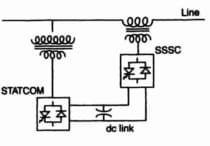 |
| Electrical Materials MCQs |
1. In general, the
effect of temperature on relative permittivity of a material is to______.
a. Maintain it
b. Increase it
c. Reduce it
d. All of these
2. Condensers to be
used at high frequencies require a material whose loss angle is______.
a. Unity
b. Uniform
c. High
d. Low
3. In which of the
following ceramics, the ionic character is maximum?
a. NaCl
b. SiO2
c. ZnS
d. CaF2
4. Which of the
following is a basic refractory?
a. Chromite
b. SiO2
c. Dolomite
d. Quartz
5. Which of the
following is not a desirable property possessed by a good refractory?
a. Chemically inactiveness
b. High temperature withstanding capability
c. High electrical conductivity
d. Both (a) and (c)
6. The dielectric
strength and dielectric constant of a ceramic should be______.
a. High
b. Low and high respectively
c. Low
d. High and low respectively
7. Which of the
following items is not made of a ceramic material?
a. Reinforcing bar for cement concrete
b. Magnet
c. Insulators
d. Ferrite
8. Which of the
following types of polarization occurs in multi-phase material?
a. Space charge polarization
b. Electronic polarization
c. Ionic polarization
d. Orientation polarization
9. The unit of
relative dielectric constant is_______.
a. Dimensionless
b. FC-1
c. CV-1
d. Fm-1
10. Among the common
dielectric materials, the highest dielectric strength is possessed by_____.
a. Polyethylene
b. PVC
c. Mica
d. Transformer oil
11. During melting,
the relative dielectric constant _____.
a. May increase or decrease
b. Always decreases
c. Always increases
d. None of the above
12. In the
polarization versus field strength plot for a ferroelectric crystal, Ps
stands for______.
a. Spontaneous polarization
b. Saturation polarization
c. Space charge polarization
d. None of the above
13. Expressed in base
SI units, the electronic polarizability has the units_____.
a. A kg-1 m-2 s2
b. A2 kg-1 s4
c. C V-1 m-2
d. F-m2
14. The materials in
which properties are independent and dependent on direction are called______.
a. Orthotropic and isotropic materials respectively
b. Anisotropic and Orthotropic materials respectively
c. Isotropic and anisotropic materials respectively
d. Anisotropic and isotropic materials respectively
15. Which of the
following pairs does not represent piezoelectric materials?
a. Potassium dihydrogen phosphate, Rochelle’s salt
b. Lead zirconate, Sodium Neobate
c. Barium titanate, Quartz
d. Lead titanate, Rochelle’s salt





0 Comments
If you have any doubt, feel free to ask.